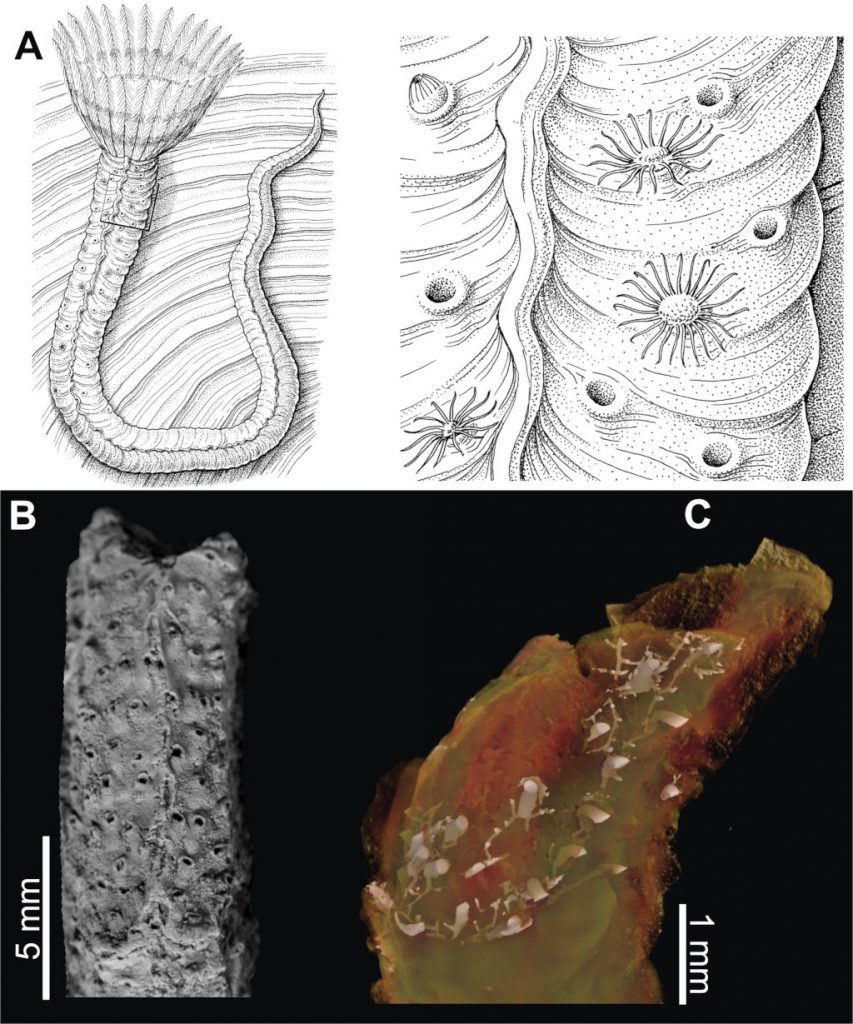Based on the few thousands of fossil specimens derived from various localities from southern Poland MSc Jakub Słowiński together with co-workers traced the symbiotic relationship between sessile polychaetes (commonly called serpulids) and their commensals – hydroids (fig. A). Although this kind of symbiotic relationship has a long evolutionary history (ca. 190 Ma), the fossil record of this phenomenon is highly dispersed both in time and space. For this reason, we still lack precise data on the frequency of this occurrence in particular geological periods, as well as on the potential evolutionary changes in the selection of the host by hydroids.
Scientists from the Institute of Earth Sciences and the Faculty of Computer Science and Materials Science (University of Silesia in Katowice) discovered that serpulids extremely rarely played a role of the host for hydroids (Fig. B) within the Jurassic sea of the Polish Basin. Moreover, these rare cases of infestation showed a strong host preferences and a bias toward certain genus of serpulids, a vast majority of which (17 out of 20) colonized only one species of serpulids derived from a single stratigraphic interval of one locality, which testifies to a more local scale of the phenomenon. Additionally, in the herein research, authors traced the internal morphology of the hydroid symbionts and their relationship with the serpulid hosts (Fig. C) using for the first time for these fossils, micro-computed tomography methods. The research was published in the Journal PLoS ONE.
Słowiński, J., Surmik, D., Duda, P. & Zatoń, M. 2020. Assessment of serpulid-hydroid association through the Jurassic: A case study from the Polish Basin. PLoS ONE 15(12): e0242924. https://doi.org/10.1371/journal.pone.0242924
https://journals.plos.org/plosone/article?id=10.1371/journal.pone.0242924






